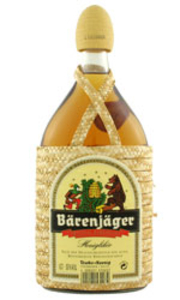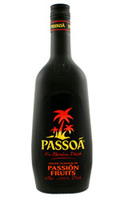-
Home
-
Contributors
-
International
-
Account
-
Information
More From Contributor
- so much so that the company was able to build a modern blending & bottling plant in Glasgow in 1962. In 1976 William Teacher & Sons Ltd joined Allied Distillers, & today their key brand is among the top five best-selling whiskies in Britain, with a strong position in the world market. ...
- Intense ruby red with garnet reflections. Clear & transparent. Smell
- Notes of sweet fruit: raspberry, blackberry & blueberry blended with notes of oak from Slavonia. Taste
- Stylish & robust, very balanced. The after-taste confirms the notes in the nose. A long & persistent wine. ...
- Yellow with green. Clear & transparent. Smell
- The nose is intense & complex fruitiness. It s very clean with notes of nuts like almonds. Rich & elegant Taste
- Good body & good acidity, quite warm, round & well balanced. Nice & elegant. The after-taste confirms the notes in the nose. Pairings: Appetizers, Entrees, Fish. ...
- Yellow with green. Clear & transparent. Smell
- The nose is intense & complex fruitiness. It 's very clean with notes of nuts like almonds. Rich & elegant Taste
- Good body & good acidity, quite warm, round & well balanced. Nice & elegant. The after-taste confirms the notes in the nose. Pairings: Appetizers, Entrees, Fish. ...
- Yellow with green. Clear & transparent. Smell
- The nose is intense & complex fruitiness. It 's very clean with notes of nuts like almonds. Rich & elegant Taste
- Good body & good acidity, quite warm, round & well balanced. Nice & elegant. The after-taste confirms the notes in the nose. Pairings: Appetizers, Entrees, Fish. ...
Teachers 70cl Bottle
(it was registered in 1884). Export growth was the next move: as early as 1903 the brand was being exported to America. During the First World War, the company voluntarily reduced sales of its whisky, by giving customers a ration card which entitled them to only five glasses a week or a bottle a fortnight. As a result, when peace returned the company had a great deal of whisky in store. The demand for teacher's Highland Cream grew steadily over the years - so much so that the company was able to build a modern blending and bottling plant in Glasgow in 1962. In 1976 William Teacher & Sons Ltd joined Allied Distillers, and today their key brand is among the top five best-selling whiskies in Britain, with a strong position in the world market.
- Availability: In Stock
- Supplier: TheDrinkShop
- SKU: 282-579
Product Description
William Teacher started work in a cotton mill aged seven; in 1830 he was employed by a small grocer in Glasgow. He married the owner's daughter, persuaded the firm to take out a licence to sell wines & spirits & expanded into 'dram shops'. These were basic public houses selling reliable spirits, with rules against buying rounds & having loud conversations; drunks & rowdies were quickly removed. Within twenty years he was the largest licence holder in Glasgow.
By this time he had been joined in the business by his sons, Adam & William. Following the example of others they moved into wholesaling, providing special blends for specific customers. One of these became very popular, so they concentrated their energies on producing & marketing it as Teacher's Highland Cream (it was registered in 1884). Export growth was the next move: as early as 1903 the brand was being exported to America.
During the First World War, the company voluntarily reduced sales of its whisky, by giving customers a ration card which entitled them to only five glasses a week or a bottle a fortnight. As a result, when peace returned the company had a great deal of whisky in store.
The demand for teacher's Highland Cream grew steadily over the years
- so much so that the company was able to build a modern blending & bottling plant in Glasgow in 1962.
In 1976 William Teacher & Sons Ltd joined Allied Distillers, & today their key brand is among the top five best-selling whiskies in Britain, with a strong position in the world market.
Reviews/Comments
Add New
Intelligent Comparison
Price History
Vouchers
Do you know a voucher code for this product or supplier? Add it to Insights for others to use.


 United Kingdom
United Kingdom
 France
France
 Germany
Germany
 Netherlands
Netherlands
 Sweden
Sweden
 USA
USA
 Italy
Italy
 Spain
Spain


















 Denmark
Denmark